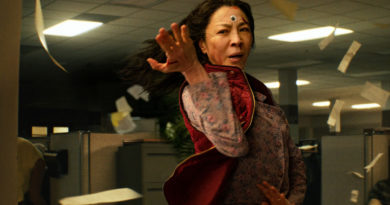What Can Peter Rabbit 2 Tell Us About the Future of Movies (From a Business Point of View)?
To be fair, I only saw the movie because I wanted overpriced popcorn and a soda. And because my wife really wanted to. I’m only writing this article to justify the one and a half hours (not bad) I lost to the movie, and to try to find some reason why the movie exists.
Well, here’s one reason: the movie cost Sony Pictures about $45 million to make and has so far recouped about three times that amount at $147 million. The original film cost a smidge over the sequel – $50 million – and made seven times as much – $350 million. These are not insane numbers, and the losses from the second one will hurt overall, but they are sustainable numbers, especially for a studio like Sony who, aside from the Spider-Man franchise, is looking for something – ANYTHING – to latch on to.
For a quick review of Peter Rabbit 2: Hops on the Run (or whatever it’s called) – it’s a cynical piece of studio propaganda garbage and I don’t like James Corden (he needs to apologize to all the visual effects artists who worked on Cats – they put in a significant higher number of work hours and effort than he ever did). It is a movie that parades around like a generic piece of fluff moviemaking, attempting to be as forgettable as possible, while at the same time indulging in its own blatant and gross hypocrisy.
Here’s what I mean: the b-plot of the movie revolves around Bea attempting to cater her story to the needs and whims of a cynical book publishing company. As the gives into the publisher with more and more increasingly demanding requests – putting the characters in urban outfits, putting the characters in space, changing aspects of the story to become ridiculous James Bond and Star Wars knockoffs – she slowly loses her inner self and integrity. Of course, she finds it again with the rabbits and she shuns the book publisher and the many millions of dollars to get her family back, completing her character arch of remembering why she wanted to write the stories in the first place.
The next thing that happens is a montage sequence doing exactly what the book publishers told her to work into her books… and they proceed to do this bastardization of Beatrix Potter’s characters while also winking at the camera, James Corden almost staring into our souls and saying, “Isn’t it ironic that we are doing exactly what we said was bad taste, and aren’t you enjoying it?”
I hate James Corden. (#FreeTheVFXArtists.)
In short, the movie is a relatively cheap exercise in… well, studio propaganda. The movie is cheap to make, rushed to produce (those poor CG artists), is an easy paycheck for most of the voice talent (and a few of the actors), and is cynical to its very bone.
It’s also working to turn some sort of a profit for Sony, and can almost be read in some way as a hopeful lesson going forward.
What do I mean by this? For one, the movie was not expensive to make but probably at least recouped its production and most of its marketing costs. The movie was never intended to make amazing money, but as a very strictly targeted movie – made for children and preteens and targeted aggressively at them, down to the horrible trailer (the trailer makes the movie look a LOT worse than the movie was, which is saying something pretty incredible) – and relatively cheap to produce due to small above-the-line costs (the main actors are generally really good but float around B+ to A- range, the director and writers do not cost a lot, most of the head of departments aren’t superstars in the industry, and most of the voice talent, while normally expensive to star in a movie, had to do the minimum amount of days recording dialogue), they could make a profit on it much more easily than something that cost, say, $100 million, especially in the time of COVID.
I am wondering, going forward, if Sony will start making more movies with tighter budgets and less overhead, or if they will revert back to the old, unsustainable model of making only a handful of movies a year with obscene budgets, hoping to tentpole in an industry that (before the pandemic) was obsessed with tent-poling their movies.
I think maybe focusing on Sony is a bad idea – they still have the rights to Spider-Man, they have another handful of superhero movies coming out in the next few years to sustain them. And to be honest, if the next crop of mid-budget movies turn out to be Peter Rabbit clones – studio propaganda filled with casual hypocrisy and no real thought put into them – then maybe we should let all the tent poles collapse on the new Hollywood Business model.
The truth is, as much as I’d hope Sony would take more of a chance on up-and-coming filmmakers with smaller or mid-budgets, the exact opposite is happening. Will Gluck, the “brain” behind the Peter Rabbit movies, made a series of gradually more and more studio-type films, all which turned a decent profit. Studios are much more willing to slash budgets and give them to has-been directors like M Night Shyamalan than they are going after fresh blood, and even those who get their budget slashed still spend way too much money on movies that, in newer filmmaker’s hands, may be able to keep the budgets even lower (though probably not – experienced filmmakers have a better feel in some circumstances on where they can cut the budget to make a good project).
Still, I hope other studios look at the returns for mid-budget movies and realize that sometimes pooling a little bit of money from a lot of places, while not always as profitable as coming out with an Avengers movie, can be a safe, conservative, and consistent way to keep profits in your pockets.
Of course, the real test will be to see how something like Black Widow does in this new climate. It could be the movie to decide the future of film production for the next decade.
No pressure.




